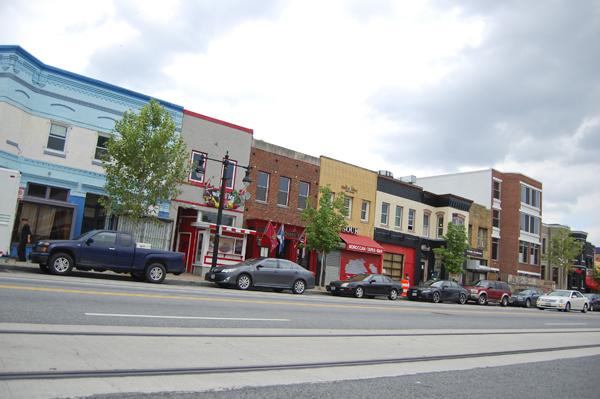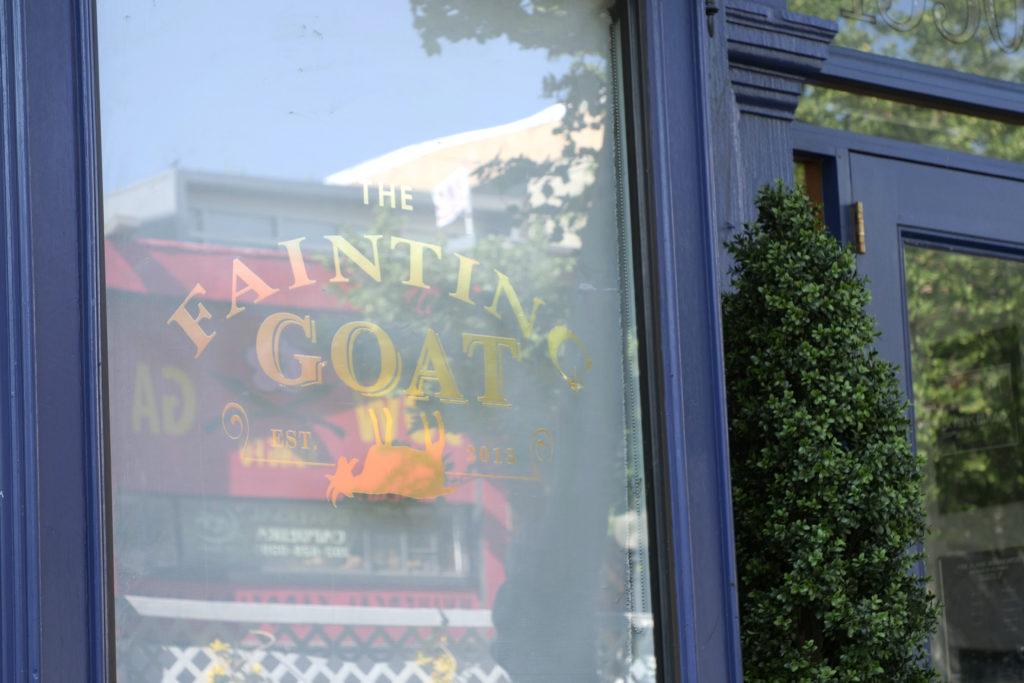Ten years ago, New York Avenue didn’t have a Metro stop. One of Columbia Heights’ main shopping complexes was an empty lot. The boardwalk along the Anacostia River in Navy Yard was still just a dirt trail.
In the last decade, a booming job market has caused thousands of recent college graduates to flock to the District, and, in GW’s case, to stay here.
The percentage of 25-to-34-year-olds in the D.C. area skyrocketed by more than one-fifth between 2006 and 2011. That growth helped D.C. rank as the 15th largest job market in the nation, and has spurred the development of more apartments, restaurants and shops that cater to a younger crowd.
The outer corners of the city are in transition, and GW graduates have long helped fuel those changes, finding cheap apartments in Columbia Heights or settling into the quieter northern Virginia area. More recently, new graduates are also heading into up-and-coming neighborhoods such as Navy Yard and H Street Northeast, which mix daytime accessibility with an exciting nightlife.
Columbia Heights

Less than 10 years ago, Columbia Heights was just starting to move big-name stores like Giant into its storefronts. Fences surrounding empty lots were covered in graffiti. Most buildings were just one story, and the shops were quiet.
Now, the lineup around 12th and Irving streets includes Target, Bed Bath & Beyond, Five Guys, IHOP and Chipotle, all within a block of the Metro stop.
The neighborhood has a vibrant Hispanic culture and offers popular bars, restaurants and shops. Performances and art vendors are common on street corners.
The overall population in Columbia Heights has remained mostly steady in the last 30 years, though the number of children fell by 8 percent over that time, indicating the young professionals are flocking there.
Kristen Peck, 25, a Catholic University alumna living in Brookland, said she often comes to Columbia Heights to shop and the area is becoming more popular among young people.
“I really like this area because they have a lot of new things, like the restaurants that they have down on, like, 11th Street,” she said.
Arlington
Arlington, Va., which boasts the highest concentration of 25-to-34-year-olds in the D.C. region, is also heating up as a destination for recent college graduates. Almost 70 percent of Arlington residents hold bachelor’s degrees, according to Arlington Economic Development.
One of the fastest growing areas of the city is the Rosslyn-Ballston corridor, which has seen a 30 percent population spike in the last decade.
Aria Varasteh, a 2012 alumnus, moved to Rosslyn after graduation, where he said rent prices were “leaps and bounds cheaper” than options in Foggy Bottom.
“It’s important that close to home has nightlife,” Varasteh said, adding that easy access to happy hours is always a plus.
While Virginia’s quiet, residential life turns away some graduates who prefer not to rely on the Metro for late night bar-hopping, it can be easier to avoid high housing prices. One well-tended apartment complex there – the Gates of Ballston – offers a studio apartment with an outdoor patio for $1,080 a month, plus in-room laundry.
Arlington locals are also proud of the neighborhood restaurants, such as Rock Bottom Restaurant & Brewery, which draws in recent college graduates on Wednesdays with $1.50 drafts available until 9 p.m.
H Street Northeast

Probably best known to GW undergraduates for its bar scene, the H Street Northeast neighborhood has undergone an arts revival in the last few years.
A local theater company finished renovating the decades-old Atlas Theater in 2006, and the space now serves as an anchor in the arts-focused neighborhood.
The restaurants here cater to a hip crowd, offering everything from happy hours and live music to coffee shop hangouts and ramen bars. It is also home to the popular concert venue Rock & Roll Hotel, and has made a name for itself the around the city with its playful and colorful H Street Festival.
The neighborhood, which is about a mile and a half long, has also added a local farmers’ market near the Union Station metro, and will implement a streetcar system in late 2013.
“I think it’s a lot places that were once, you know, perceived as kind of sketchy, are becoming less sketchy because a lot of younger people are moving in there,” Peck, the teacher from Brookland, said.
Mount Vernon Square

Mount Vernon Square has shed its “bad neighborhood” reputation in recent years, as a new convention center, condominiums and grocery stores have boosted its image. The neighborhood is the eighth most walkable for daily errands in D.C., according to walkscore.com.
The area also houses the Kennedy Recreation Center with basketball courts, a baseball field and a tennis court.
The neighborhood mostly caters to business professionals, but nearby Chinatown offers access to hotspots like the National Portrait Gallery, the Verizon Center and entertainment food venue Busboys and Poets.
About 6,000 people call the Mount Vernon Square neighborhood home, and about half that number are single. The average monthly rent stands at about $1,100.
Amid the rush of activity in and around Mount Vernon Place, the massive Washington Convention Center towers above apartment buildings, churches and schools. Young professionals can grab a bite to eat at local restaurants that cater to the after-work crowd, then head home to brightly-colored residential neighborhoods.
Navy Yard

Navy Yard has been both a historic shipbuilding site – with its glory days mostly between U.S. independence and the War of 1812 – and a valued weapons supplier during America’s worst overseas crises.
After shutting down many operations in the 1960s, the Navy moved one of its largest systems commands centers back on site in 2001, sparking revitalization of the area.
It now features a boardwalk along the Anacostia River, which provides a view of hundreds of docked boats along the pier. Yards Park is also nearby, not to mention the baseball stadium home to the Nationals.
A key draw is the average $909 monthly rent, beating out most other neighborhoods for affordable living.
–Colleen Murphy, Karolina Ramos, Allison Kowalski and Sarah Ferris contributed to this report.








